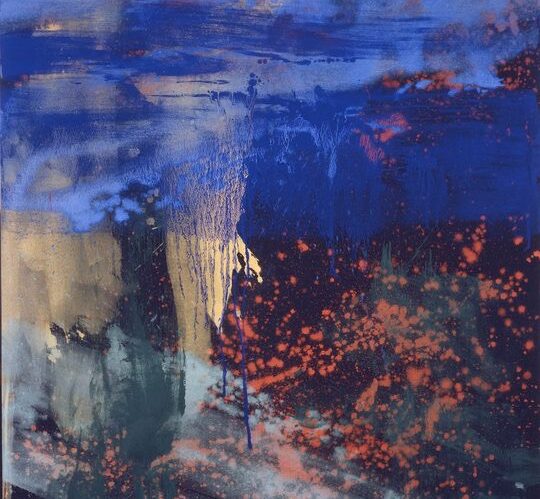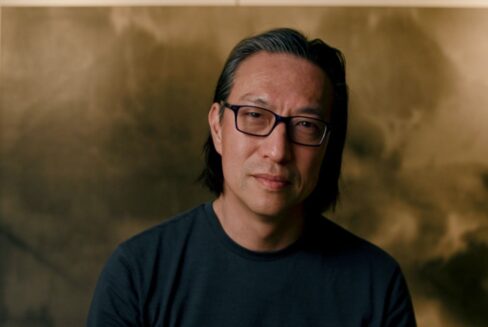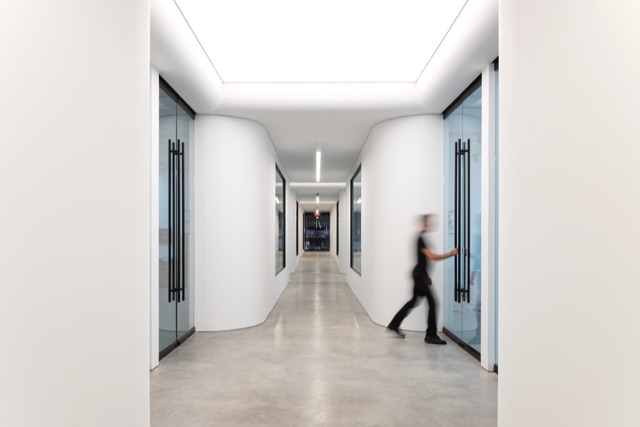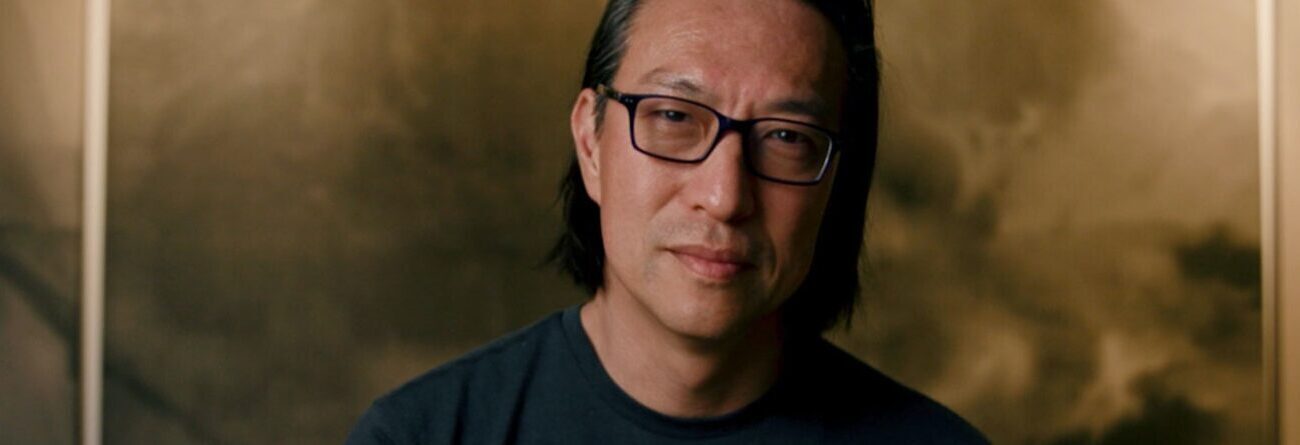
Meet the Artist: Makoto Fujimura at High Line Nine
Visitors to High Line Nine Gallery this month will have the privilege of experiencing first-hand some of the best transcendental art created today.
Makoto Fujimura, a preeminent contemporary artist known globally for his deeply meditative “Slow Art” style, will be exhibiting at High Line Nine with an installation called "Re-membrance." It opened September 2 and will run through the end of the month.
Creating Slow Art is a precise and diligent process. Fujimura grinds colorful ores into vibrant powders and paints with them in layers, allowing ample time for each layer to dry before continuing. The pieces come to life slowly, with some evolving over 100 layers. Some pieces have taken years to complete. The final collages are arresting in their intensity and then deeply meditative, as the layers begin to take forms of their own.
In an interview with My Related Life, Fujimura described Slow Art as “developing naturally from Nihonga,” a Japanese style of painting that uses pulverized precious minerals mixed by hand with hide glue.
“I respond to my own experiences of trauma and delights by processing through the intuitive process of creating. I am able to find healing and meaning by making of art,” Fujimura said. “In the current 'Re-membrance' exhibit, I have three new paintings that refer to 9/11/01, 3/11/11 (The Great Tohoku Earthquake and Tsunami), and Columbine High School shooting. It’s through Beauty that I find hope and meaning.”
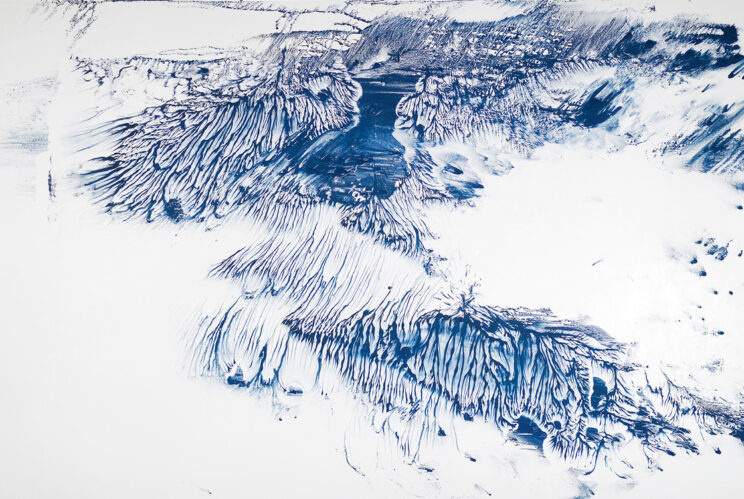
Credit: Walking on Water - Glacier | 84" x 144” | Azurite and Malachite on Polished Canvas | Copyright © 2021 Makoto Fujimura
In a recent column, New York Times editor David Brooks described the following scene of his experience with Fujimura’s Slow Art:
Mako once advised me to stare at one of his paintings for 10 to 12 minutes. I thought it would be boring, but it was astonishing. As I stood still in front of it, my eyes adjusted to the work. What had seemed like a plain blue field now looked like a galaxy of color.
Of his inspirations for Slow Art, Fujimura said, “I’ve been fascinated by mysticism of St Theresa to William Blake, as well as 16th and 17th century Japanese art. Particularly the aesthetics of Sen no Rikyu, the grand tea master whose embodiment of peace-making is what I focus on through my art."
Tea masters are deeply tied associated to the ancient Japanese art of Kintsugi, another source of inspiration. Kintsugi masters would repair broken tea ware for continued use by fusing them with Japanese lacquer and gold, creating unique works of art.
“Kintsugi actually makes the broken pottery even more ‘beautiful’ than the original, as the Kintsugi master will take the broken work and create a ‘restored’ piece that makes the broken parts even more visually sophisticated. No two works, done in such mastery, will look the same or break in the same way,” Fujimura explained.
This art legacy inspired “Kintsugi Generation,” Fujimura’s much-acclaimed 2019 commencement address at Judson University. The address sought to lay out his cultural vision for the next generation, emphasizing resilience and the beauty that can result from overcoming trauma.
"Kintsugi is a significant way to communicate peacemaking in conflicted, fragmented time that we live in," Fujimura said. He and his wife, Haejin Shim Fujimura, will be launching Kintsugi Academy (@academykintsugi) in the coming months.
The purpose of Kintsugi Academy is “to endeavor to fuse beauty with justice, teaching the craft of Kintsugi, then developing the somatic knowledge to the greater movement of Culture Care and Peace-making,” Fujimura explained.
This month’s “Re-membrance” exhibition will also feature a few Kintsugi pieces that have been “mended into the New” by a Kintsugi Master, with their accompanying Kintsugi boxes beautifully painted by Fujimura.
In closing out our interview, we asked Fujimura that age-old question, how and when did you feel called to create? He directed us toward an excerpt from his book, Art + Faith: A Theology in the Making, which he felt best described his journey. We’re pleased to share the fascinating excerpt, in which Mako shares some of his most formative memories.
When people ask, “When did you first know that you were an artist?” I tell them I have been an artist ever since I can recall. My mother kept a painting I did as a three-year-old. Many years later, after I established myself as an artist, I was astonished to see that it has exactly the same colors and movement that I am known for now. The journey of an artist begins at conception, and perhaps even way before.
My earliest memory is visual: I am one-and-a-half, just waking up from a nap, and from the window in my room I am watching my brother walk toward a preschool in Sweden (I was born in Boston but spent time in Sweden before moving to Japan for grade school). I can remember the color of the curtains and the Swedish flag waving in the crisp, morning sun. And, I am told, the painting I did later in Japan echoed those colors, too.
When I painted something as a child, I felt as if an electrical charge were going through me. That energy resounded over the surface of the paper. I thought everyone had this experience, but then I went to middle school (in New Jersey then). It was obvious that boys playing football or soccer had not had the same type of experiences that I had — noticing the beauty of the world around me, or the visual patterns of a certain movement of the grass in the waning days of autumn while playing soccer. I did not want to be a misfit, so I kept those thoughts private. But these moments of creative discovery seemed sacred to me, even if I did not fully understand them.
Fujimura's artworks are exhibited globally in museums from Hong Kong and Tokyo to Vienna and Haifa. When he is not called to create or educate, he unwinds in the garden, calling himself “an avid gardener.” He also enjoys traveling and exploring new museums with his wife Haejin.
"Re-membrance" will run through September 30 at High Line Nine in West Chelsea. The notable not-for-profit* experiential art gallery cultivates artists through its residency program and regularly rotates salient exhibits in partnership with city's top cultural institutions.
*application pending
The Related Life is written and produced by the Related Life Editorial Team. Be sure to follow us on Facebook and Instagram for the latest events, news and announcements in your area, and tag us for a chance to be featured @therelatedlife and #therelatedlife.
